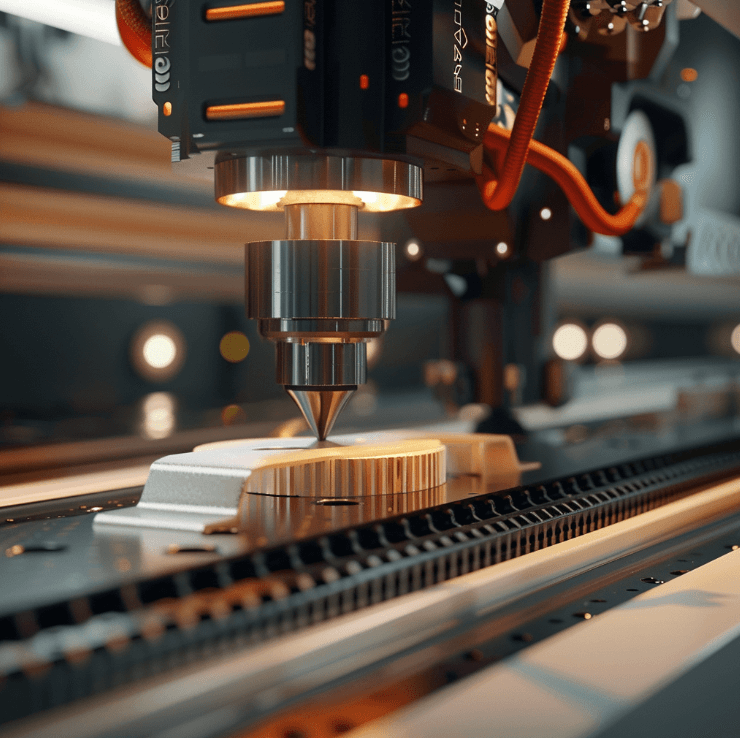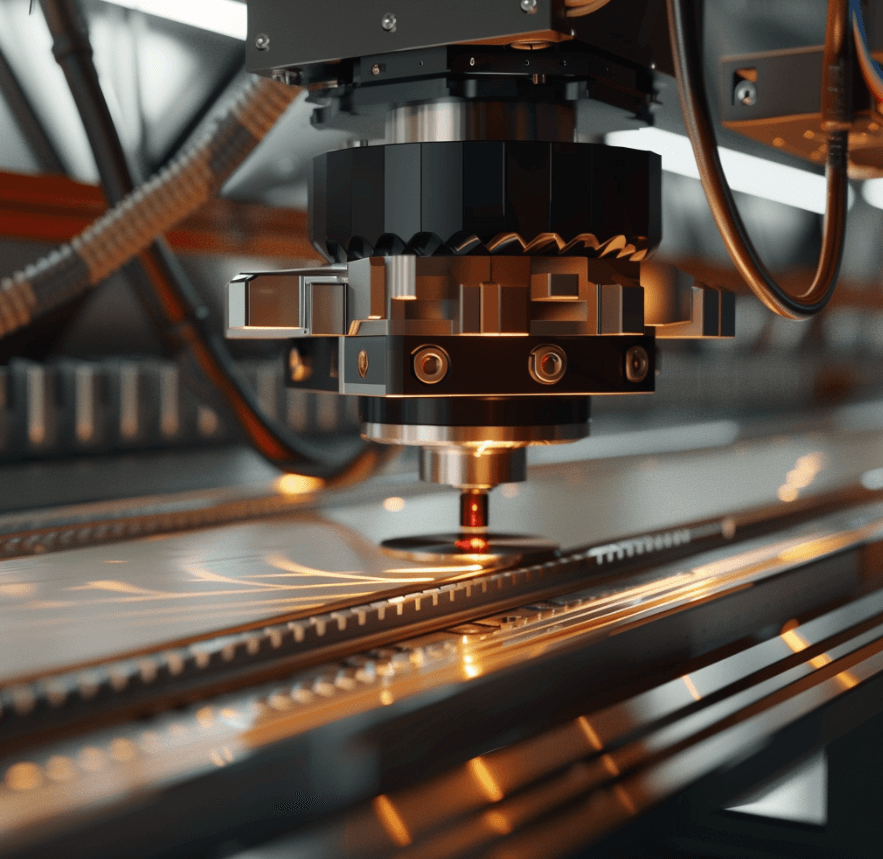How can you automate any CNC machine?
Long story short: Industrial robots can automatically load and unload parts, activate and deactivate the CNC machine, monitor the machining process, and even handle post-processing tasks like buffing or polishing finished parts.
Of course, the real point is finding a robot with the right payload capacity, reach, and skill for your CNC machine.
Additionally, the integration of robots with CNC machines opens up possibilities for predictive maintenance and smarter production planning.
With the data collected from their monitoring activities, robots can predict when a machine might fail or when tools need replacing, allowing for maintenance to be scheduled without throwing a wrench into your production.
This proactive approach prevents unexpected downtime and extends the life of both the CNC machines and the tools used.
Robots equipped with AI capabilities can also analyze production data to optimize machining paths and processes, further increasing efficiency and reducing material waste.
Their ability to learn and adapt means that over time, the robotic system becomes even more aligned with your specific production goals, continually getting better and better.
So, all in all, incorporating robots into CNC operations doesn't just automate tasks — it enhances the intelligence and responsiveness of the manufacturing process.
What can be automated on a CNC machine?
So what exactly can you automate on your CNC machine? Quite a bit, actually.
The most common types of CNC automation include:
- Part loading and unloading: A robot removes raw parts from a pallet or conveyor and loads them into the CNC machine for machining. It then unloads the finished parts. This frees up your operators from repetitive loading/unloading tasks (they’ll thank you for it).
- Machine activation and deactivation: A robot can turn the CNC machine on at the start of a production run and turn it off at the end of the shift. This helps you make sure the machine is only running when it needs to be, saving energy.
- In-process monitoring: Robots equipped with vision systems or force sensors can monitor the CNC machining process in real time. They can flag issues like tool breakage, part misalignment or machine errors to cut down scrap and downtime.
- Post-processing: Robots can handle finishing tasks like deburring, grinding, or polishing parts after they come out of the CNC machine. This eliminates the need for a separate finishing station and additional operators.
- Quality inspection: Vision-equipped robots can inspect the dimensions, surface finish, and other attributes of CNC-machined parts. They reject any parts that don't meet quality standards before they move on to the next stage of production.
- Tool changing: Robots efficiently swap out tools in the CNC machine, choosing the appropriate drill bit or milling tool for each job. This automation ensures the right tool for the task without manual intervention, optimizing machining time.
- Material feeding: A robot supplies raw material to the CNC machine for a continuous production flow. Whether it's metal bars, plastic sheets, or wood panels, this keeps your CNC machine fed without pause, enhancing throughput.
- Waste management: Post-machining, robots can remove and dispose of or recycle waste material, keeping the workspace clean and reducing manual cleanup efforts. This not only maintains a tidy environment but also complies with safety and environmental regulations.
Why automate your CNC?
By automating your CNC machines with collaborative robots, you can significantly increase your productivity.
Here’s how:
- You’ll skyrocket productivity: Robots can run 24/7 without breaks, basically allowing you to get the most out of your CNC machines.
- Quality standards you won’t believe: Robotic inspection systems detect flaws and non-conforming parts early. Plus, they can do it better than any human.
- You’ll cut down costs: Automation reduces labor costs and improves energy efficiency.
- Bigger safety margins: Automating dangerous tasks like loading heavy parts into a CNC machine helps avoid injuries and keeps your precious (and squishy) human workers safe.
- Endless reuse potential: Modular automation systems can be reconfigured to work with different CNC machines and parts.
- Deadline woes? Fuggedaboutit: With robots tirelessly working, you're looking at meeting those tight deadlines head-on, delivering orders faster than ever before.
- Customization? Endless: Robotic systems are undefeated at handling custom orders. They can switch tasks in no time, making small-batch production or personalized orders a breeze.
- Space savers: Think robots, think bulky? Not anymore. Modern robotic systems are designed to fit neatly into existing setups, maximizing your space without sacrificing efficiency.
- The green factor: By optimizing energy use and reducing waste, automation not only boosts your bottom line but also your green credentials. It's a win-win for your factory and the planet.
- Skilling up: Automation doesn't just replace tasks; it transforms roles. Your team gets to upskill, moving into more complex, fulfilling roles as robots take on the monotony.
- Smooth operator: Integration with your existing systems is not necessarily as difficult as you might think, making sure you get a nice, smooth workflow from design to production.
Robots talk nicely with your software, making the process smooth and headache-free.
So, the TL;DR is: With the right automation solution, you can transform any CNC machine into a flexible, efficient, and high-quality production system.


